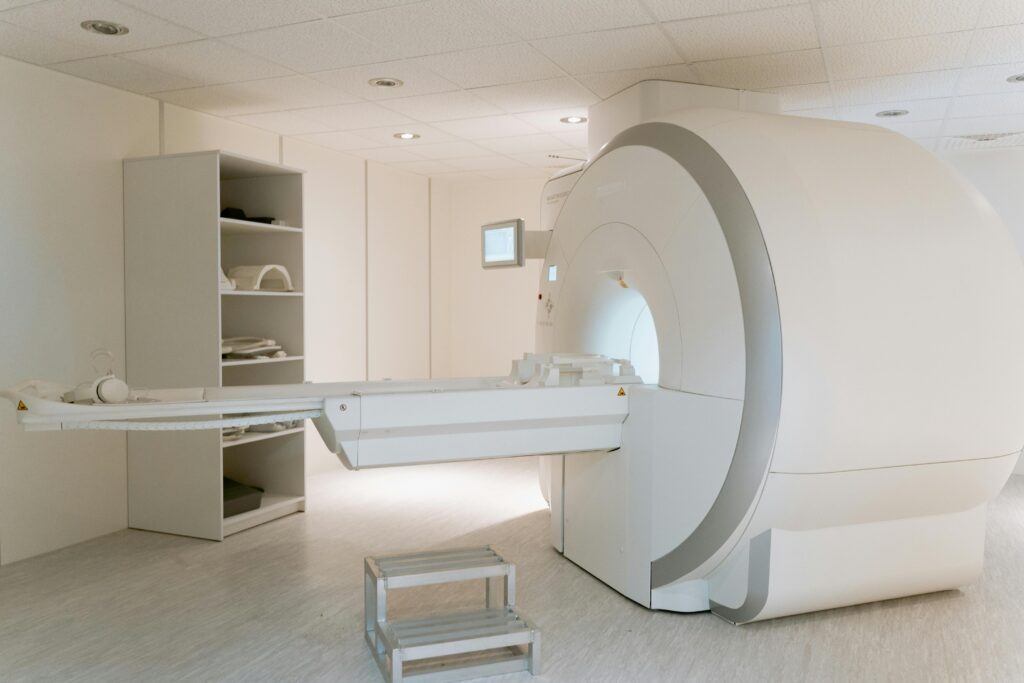Radiologic imaging plays a vital role in diagnosing and treating medical conditions — and the professionals behind the images are just as essential. Whether you’re new to healthcare or looking to level up, choosing the right radiology pathway can shape your career trajectory for years to come.
In Texas and beyond, three common roles define the entry-to-advanced ladder in radiology:
| Role | Training Time | Credential | Scope of Work | Estimated Salary |
|---|---|---|---|---|
| NCT | A few weeks | State-recognized (TX only) | Basic X-rays | $38K–$48K |
| LMRT | 1–2 years | State-licensed | Broader X-rays | $55K–$70K |
| RT | 2–4 years | ARRT-certified | Full-scope imaging | $65K–$90K+ |
Now that you’ve seen the quick snapshot, let’s dive deeper into what each of these roles really looks like on the job.
Non-Certified Technician (NCT)
A Quick Start into Medical Imaging
If you’re looking to enter the field quickly and start gaining experience, the Non-Certified Technician role may be your best option — but it comes with limitations.
NCT programs are usually shorter, taking place over a couple of weeks. They focus on the basics: learning to take limited X-rays (like chest or extremities), proper patient positioning, and safety protocols. Because this pathway exists only in Texas, job opportunities are geographically restricted — but in the right location, it’s a fast track to hands-on work.
NCTs always work under supervision and are not qualified to perform more advanced scans like CT or MRI. This role is often used as a springboard into longer-term certification paths like LMRT or RT. If you’re eager to get started and willing to pursue additional education later, the NCT role is a viable starting point.
Average Pay: $18-$23/hour ($38,000-$48,000/year)
Where They Work: Clinics, urgent care centers, outpatient offices
Career Path: Best used as a stepping stone toward LMRT or RT programs
Limited Medical Radiologic Technologist (LMRT)
More Responsibility, Greater Flexibility
The LMRT role is a significant step up from NCT — both in training and opportunity. Certification programs can be completed within a year and associate degrees take, on average, two years. Employers often favor candidates with an associate degree from an accredited program, especially in competitive areas.
LMRTs are licensed to perform a wider variety of X-rays beyond just chest or limbs. They often handle spine, abdomen, and more advanced imaging within their approved scope — though they are still not licensed for CT, MRI, or ultrasound unless they pursue additional certifications.
What makes the LMRT role appealing is its versatility. Many work in outpatient or urgent care settings, and some states recognize the license outside of Texas. It’s a good balance for those who want more than an entry-level job without committing to the longer path of full RT certification.
Average Pay: $26–$34/hour ($55K–$70K annually), with potential for more in specialized or high-demand settings.
Where They Work: Imaging centers, urgent care, outpatient clinics
Career Advantages:
-
Portability: Some state reciprocity available
-
Bridge Potential: LMRT programs often feed directly into RT training
Radiologic Technologist (RT)
The Gold Standard in Medical Imaging
Radiologic Technologists are the most broadly trained and certified professionals in this space. After completing a 2 or 4-year degree, RTs must pass the ARRT (American Registry of Radiologic Technologists) exam to become nationally certified — giving them career portability in all 50 states.
RTs are licensed to perform a wide range of diagnostic imaging procedures, including CT scans, MRI, fluoroscopy, and more. They often work in hospitals, ERs, trauma centers, and specialized departments like cardiology or orthopedics.
This path is ideal for those committed to a career in medical imaging and who want the flexibility to move, specialize, or eventually lead. With additional training, RTs can branch into mammography, interventional radiology, radiation therapy, and even department administration.
- Average Pay: $30–$45+/hour ($65K–$90K+)
- Where They Work: Hospitals, trauma centers, specialty clinics
- Long-Term Growth: Highest potential for specialization, leadership, and pay
Which One Is Right for You?
If you’re…
-
Looking for a fast start: → NCT may be a great launchpad
-
Wanting a balanced career path: → LMRT offers training + opportunity
-
Thinking long-term and nationwide: → RT is your gold standard
No matter where you begin, there’s always room to grow. Many NCTs become LMRTs. Many LMRTs go on to become RTs. What matters most is starting somewhere — and staying committed to growth.
Looking for Your Next Role in Radiology?
No matter where you are on your journey — whether you’re just starting out as an NCT, growing into an LMRT role, or advancing as a fully certified RT — the right opportunity is out there.
For even more permanent radiology and imaging opportunities across the country, be sure to check out Radius Staffing Solutions. Our job board is regularly updated with roles for Radiologic Technologists, Sonographers, CT Techs, and more — from entry-level to advanced.










